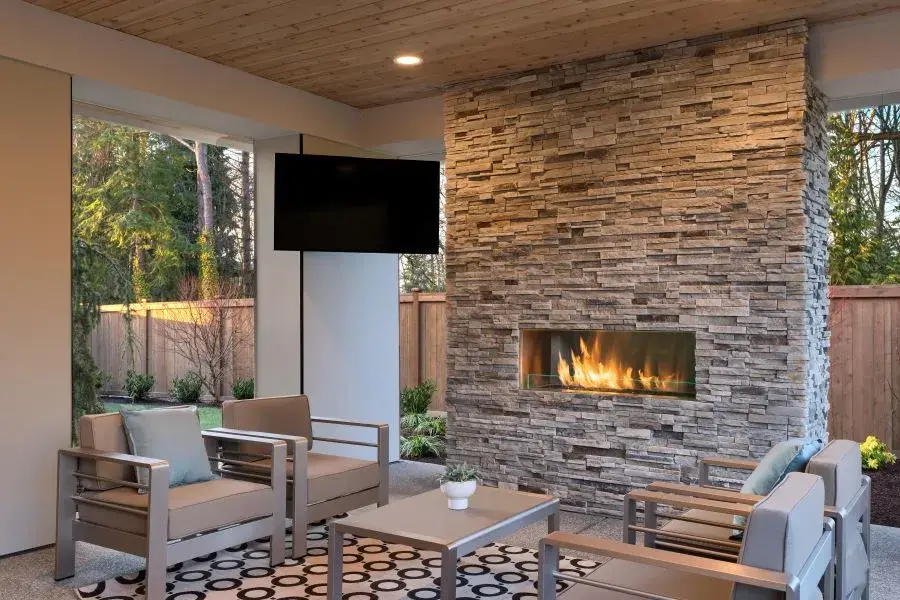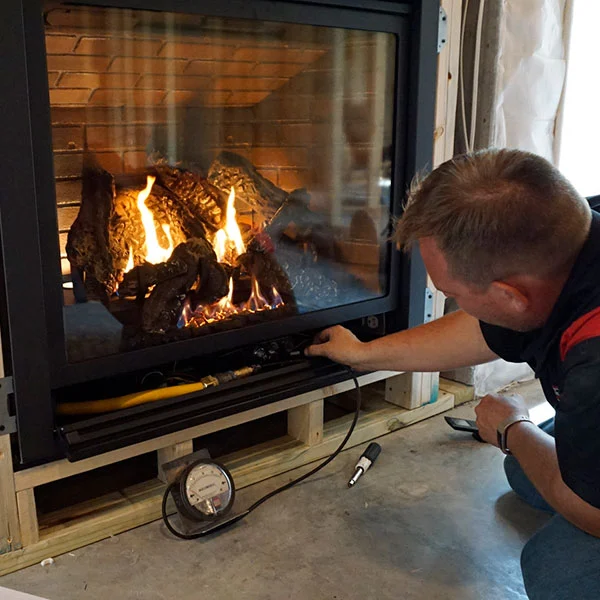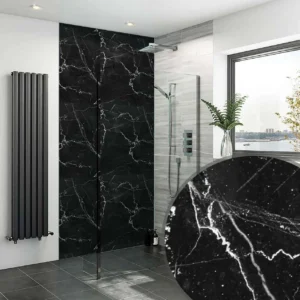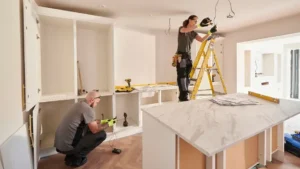
In today’s world, the concept of home heating has evolved far beyond simple fireplaces and stoves. Hearth and home technologies are transforming homes, bringing together tradition, innovation, and sustainability. As we step into 2024, advancements in hearth technologies are reshaping how we think about heating solutions—providing greater efficiency, smarter control, and eco-friendly options.
This guide will explore everything you need to know about hearth and home technologies, from their history to the latest trends. Whether you’re considering a new fireplace, upgrading your home heating system, or exploring eco-friendly alternatives, this comprehensive guide has you covered.
What is Hearth and Home Technology?
Hearth and home technologies refer to the systems and devices used for home heating, traditionally centered around fireplaces, stoves, and other hearth-related equipment. Modern hearth technology not only offers efficient heating but also incorporates smart features, eco-friendly options, and enhanced safety measures to provide a complete home experience.
The History of Hearth and Home Technologies
For centuries, the hearth has served as the heart of the home, offering warmth, a place for cooking, and a communal gathering point for families. In ancient times, hearths were basic open fires fueled by wood, but as technology advanced, so too did the innovations surrounding hearth design and functionality.
- Early Wood-Burning Fireplaces: The first fireplaces were open, inefficient designs, where much of the heat escaped through the chimney. Over time, improvements such as enclosed stoves, chimneys with dampers, and heat-efficient materials revolutionized hearth technology.
- 20th Century Innovations: The 1900s saw the development of gas-powered fireplaces, pellet stoves, and electric heating options, offering more convenient and cleaner alternatives to traditional wood-burning systems.
- Modern Era (2000s – 2024): Today, hearth technologies are fully integrated with smart homes, utilizing cutting-edge features like remote control, automatic ignition, eco-friendly fuel options, and direct venting systems.
Types of Hearth Technologies

Traditional Fireplaces
- Wood-Burning Fireplaces: Wood-burning models remain popular for their ambiance and rustic appeal. While they are often less energy-efficient than modern alternatives, improvements in technology have introduced cleaner-burning wood stoves.
- Gas Fireplaces: Gas fireplaces offer a convenient, energy-efficient alternative to wood. With options such as vented and ventless models, they provide flexibility and ease of use.
Modern Fireplaces
- Electric Fireplaces: Electric fireplaces are ideal for homeowners looking for hassle-free installation and no emissions. These fireplaces can be used for aesthetic purposes with heat on demand.
- Vent-Free Fireplaces: These gas fireplaces do not require a vent or chimney, making installation simpler and cheaper, though they may come with certain air-quality concerns.
Pellet and Biomass Stoves
Pellet stoves and biomass heating systems utilize compressed wood pellets or other organic materials as fuel for efficient heating. These stoves are eco-friendly, efficient, and provide a sustainable heating option for modern homes.
Advanced Gas Logs and Inserts
Gas logs and inserts are used to convert existing wood-burning fireplaces into gas-powered units. These inserts boost energy efficiency while maintaining the traditional appearance of a wood-burning hearth.
Outdoor Hearths
For homeowners looking to extend their living space outdoors, fire pits and outdoor fireplaces are popular choices. They provide warmth, ambiance, and a focal point for social gatherings on patios or decks.
For more interesting blogs, visit our site: https://futuretrendz.co.uk/
Key Players in the Hearth Industry
In 2024, Hearth & Home Technologies (HHT) continues to lead the market with a range of innovative products. Known for its brands like Heat & Glo, Quadra-Fire, and Harman Stoves, HHT has built a reputation for quality, efficiency, and design. Other notable players include:
- Quadra-Fire: Known for its durable and efficient wood and pellet stoves.
- Heat & Glo: A pioneer in gas fireplace innovation, offering energy-efficient and stylish fireplaces.
- Harman Stoves: Focuses on environmentally friendly pellet stoves and sustainable biomass heating solutions.
These companies have invested in technological innovation, producing fireplaces that offer smarter, greener heating options.
Innovations in Hearth Technologies

Hearth and home technologies have seen significant advancements in recent years. Some of the key innovations include:
Smart Fireplaces and Home Integration
Smart home integration is a leading trend in the hearth industry. Fireplaces can now be connected to smart home systems, allowing homeowners to control the temperature, lighting, and even the ambiance of the fireplace from their smartphone or voice-controlled devices like Amazon Alexa or Google Home.
Energy-Efficient Models
Efficiency is at the heart of modern hearth technologies. Direct vent fireplaces, for example, use outside air for combustion, improving efficiency and safety. Electric fireplaces, on the other hand, provide heat without the need for fuel or vents, making them highly efficient.
Eco-Friendly Hearths
There is a growing demand for sustainable heating solutions, and hearth technologies have responded with eco-friendly fuels such as pellets, ethanol, and biomass. These alternative fuels burn cleaner than traditional wood or gas, making them an attractive choice for environmentally conscious consumers.
Remote Control and User-Friendly Interfaces
Many modern fireplaces are equipped with remote controls or even apps that allow users to adjust settings without getting up. These user-friendly interfaces are part of the growing trend toward automation in home heating solutions.
Ventless Fireplaces
Homeowners are increasingly choosing ventless fireplaces, particularly gas models, because they are easy to install. Unlike traditional fireplaces that require a chimney or vent, ventless models can fit into nearly any room, providing a flexible and convenient heating solution.
Benefits of Modern Hearth Technologies
Hearth and home technologies offer several benefits in 2024:
- Energy Efficiency: Modern fireplaces and stoves are designed to use less fuel while providing more heat, lowering energy bills.
- Enhanced Aesthetics: Fireplaces have become design focal points in homes, with customizable options like see-through or three-sided models, modern finishes, and creative stonework.
- Sustainability: Eco-friendly fuel options, such as pellets and biofuels, help reduce carbon emissions and lower the environmental impact of home heating.
- Improved Safety Features: Many modern hearth systems come with built-in safety features, such as automatic shutoff, carbon monoxide detectors, and cool-to-touch glass barriers, ensuring that homes stay safe while enjoying the warmth of a fire.
- Smart Features: The integration of smart technology allows users to control their fireplace remotely, set timers, and even program custom heating schedules.
For more interesting blogs, visit our site: https://futuretrendz.co.uk/
Installation and Maintenance of Hearth Technologies

Installation Guidelines
Proper installation is critical for safety and efficiency. Homeowners should always follow building codes and safety regulations when installing a fireplace or stove. For complex installations, hiring a certified professional is highly recommended.
Regular Maintenance
Like any home appliance, hearth systems require regular maintenance to keep them running efficiently. This includes annual inspections, cleaning out ash or soot, and checking for issues like chimney blockages or gas leaks.
Common Problems and Troubleshooting
Common issues include problems with igniters, airflow, or fuel. Troubleshooting tips, such as cleaning the air intake or replacing faulty parts, can help keep the system running smoothly.
FAQs
1. Which type of fireplace offers the highest energy efficiency?
Gas and electric fireplaces are among the most energy-efficient, with direct vent gas fireplaces providing high heat output and low energy loss.
2. Are pellet stoves environmentally friendly?
Yes, people consider pellet stoves eco-friendly because they burn renewable fuel sources and produce lower emissions than traditional wood stoves.
3. Can I control my fireplace with a smartphone?
Yes, many modern fireplaces come with smart home integration, allowing users to control temperature, lighting, and other settings via smartphone apps.
4. Are ventless fireplaces safe?
Ventless fireplaces can be safe when installed correctly and used as intended, but they may cause indoor air quality concerns in poorly ventilated spaces.
5. How often should I service my fireplace?
Fireplaces should be serviced annually to ensure they are functioning efficiently and safely.
Conclusion
As 2024 brings new innovations in hearth and home technologies, homeowners have more options than ever to enhance comfort, efficiency, and sustainability. Whether you prefer a traditional wood-burning fireplace or the latest smart electric model, there’s a perfect solution to meet your home heating needs.
Hearth and home technologies are not just about warmth—they’re about creating a comfortable, stylish, and sustainable home environment that enhances your lifestyle. With the right installation, maintenance, and technological integration, your home can enjoy the benefits of these advanced heating solutions for years to come.
Learn more about emerging trends at Future Trendz.







